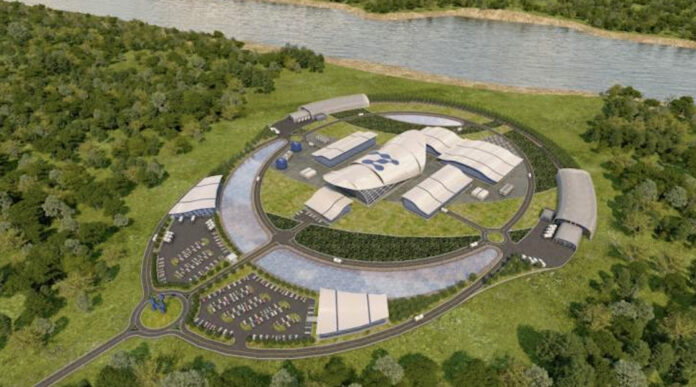
Three Indigenous companies in northern Saskatchewan — including the business arms of the Lac La Ronge Indian Band and English River First Nation — signed a memorandum of understanding (MOU) to invest in small modular nuclear reactors (SMRs) on Tuesday.
The move comes after Alberta joined a partnership with Saskatchewan, Ontario and New Brunswick to develop the new technology in April.
There is “strong momentum” in Canada toward new nuclear reactor technologies that have the potential to supply power nationwide, including in remote or off-grid areas, English River First Nation’s Des Nedhe Group CEO Sean Willy said.
“As three Indigenous organizations who are highly experienced in servicing the nuclear industry, it made perfect sense for us to get together and jointly pursue exploring opportunities in this exciting and emerging industry.”
Mining uranium — which fuels nuclear technology — is a major driver of the economy in northern Saskatchewan. Canada’s uranium mostly comes from the McArthur River and Cigar Lake mines — which are the largest in the world and produce the highest-grade.
The Lac La Ronge Indian Band’s Kitsaki Management CEO Russell Roberts said the three companies have worked together on investments before and make a “formidable team.”
“By signing this MOU, we plan to address key items for SMR investment, including research, due diligence, environmental, communications and financing,” Roberts said.
“We are very open to discussion with interested parties and excited to be part of this group to invest in and further advance Canadian SMR technology.”
Kitsaki Management, Des Nedhe Group and Athabasca Basin Development collectively have partnerships with more than 40 Indigenous and non-Indigenous organizations across Canada.
Indigenous investment company Athabasca Basin Development chair Anne Robillard said there’s a long history of “mutually beneficial relationships” with uranium companies between them.
That collective experience “makes us uniquely qualified to explore opportunities related to SMRs, from investment to construction, operation and maintenance,” she said.
SMRs are nuclear reactors that produce 300 megawatts of electricity or less and can operate connected to the grid or independently. The reactors could help smaller and remote off-grid communities as an alternative energy source to lower the cost of operating solely on diesel fuel.
An SMR grounded to a small grid could power facilities such as hospitals, data centers and military bases. Mobile ones could power resource projects like mining and oil sands operations.
An industry study released by the partner provinces in April found that SMR development would “create employment and economic growth benefits for Canada” that could present further opportunities to “export technology and expertise to address global issues such as climate change and energy reliability.”
The study conducted by SaskPower, Ontario Power Generation, Bruce Power and NB Power outlines three streams of projects for Ontario, New Brunswick and Saskatchewan.
The first stream proposes a first grid-scale SMR project of 300 megawatts at the Darlington nuclear site in Ontario by 2028. Subsequent units in Saskatchewan would follow, with the first SMR projected to be in service for 2032.

